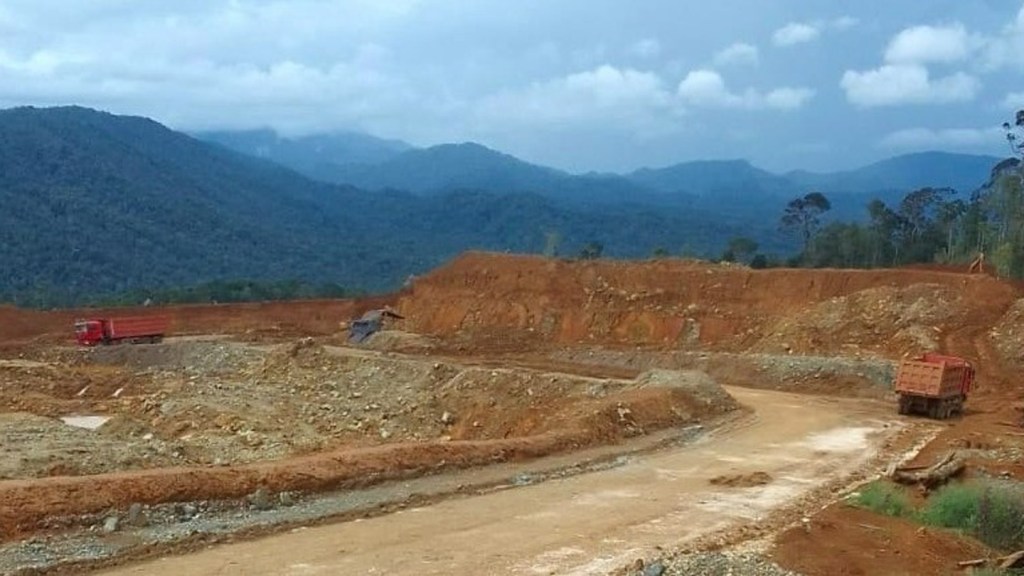ATHENRY, Ireland — It was a sunny Monday in August 2015 when a trio of Apple executives rolled into this tiny town in the west of Ireland. They drove up the tree-lined avenue leading to the Raheen Woods Hotel to meet Allan Daly, a local resident who had submitted some observations to the local planning authority about Apple’s plans to build a billion-dollar data center in an isolated forest, three miles from the village.
Daly is an American by birth and an environmental engineer by trade, and his main objections to the project were environmental. He was worried about the strain the proposed data center would put on Ireland’s electrical grid. He was also worried that Apple had no plans to mitigate the volume of greenhouse gas emissions he’d calculated the facility would produce. Plus, he just didn’t think the site in Derrydonnell Wood was suitable. There were better sites in County Galway already zoned for this type of thing. He thought Apple should choose one of those instead.
Videos by VICE
The Apple representatives, who included the head of data center development, couldn’t have known that the man sitting in front of them would be one of the main reasons why, almost two years later, they have yet to break ground on their plan to build eight vast data halls outside Athenry. A month after the meeting, the local authority approved the project, but it remains tied up in legal challenges in the Irish High Court.
The August meeting was cordial, Daly said, but he came away knowing Apple would not concede an inch to any objections from him or other local people who had questions about the development’s viability. “They were very nice, but it was very clear that if they were going to do anything, it was going to be on their terms and with their timing,” he told me when I met him at the same hotel in May, in his first interview about the case. “They were adamant that the approach they were taking was 100 percent renewable anyway, so anything else they were doing was above and beyond.”
Apple is the world’s most valuable company, and it’s used to getting its way. Yet here in rural Ireland, one man has managed to block its ambitions. Data centers aren’t sexy like iPhones, but as smartphone sales slow, they are now critical to Apple’s future, powering services like iTunes, the App Store, iMessage, and iPhoto. As lawmakers in Brussels clamp down on U.S. companies sending customer data across the Atlantic, the ability to store data in Europe is becoming essential. Without its own data centers, Apple would need to rely on companies like Amazon and Google — something it doesn’t like doing.
The Athenry data center would be only Apple’s second outside the U.S.; the other, in Denmark, was announced around the same time and is already due to come online before the end of the year. Rumors are circulating that Apple is so frustrated by the delays in Athenry that the company might pull out of the project entirely.
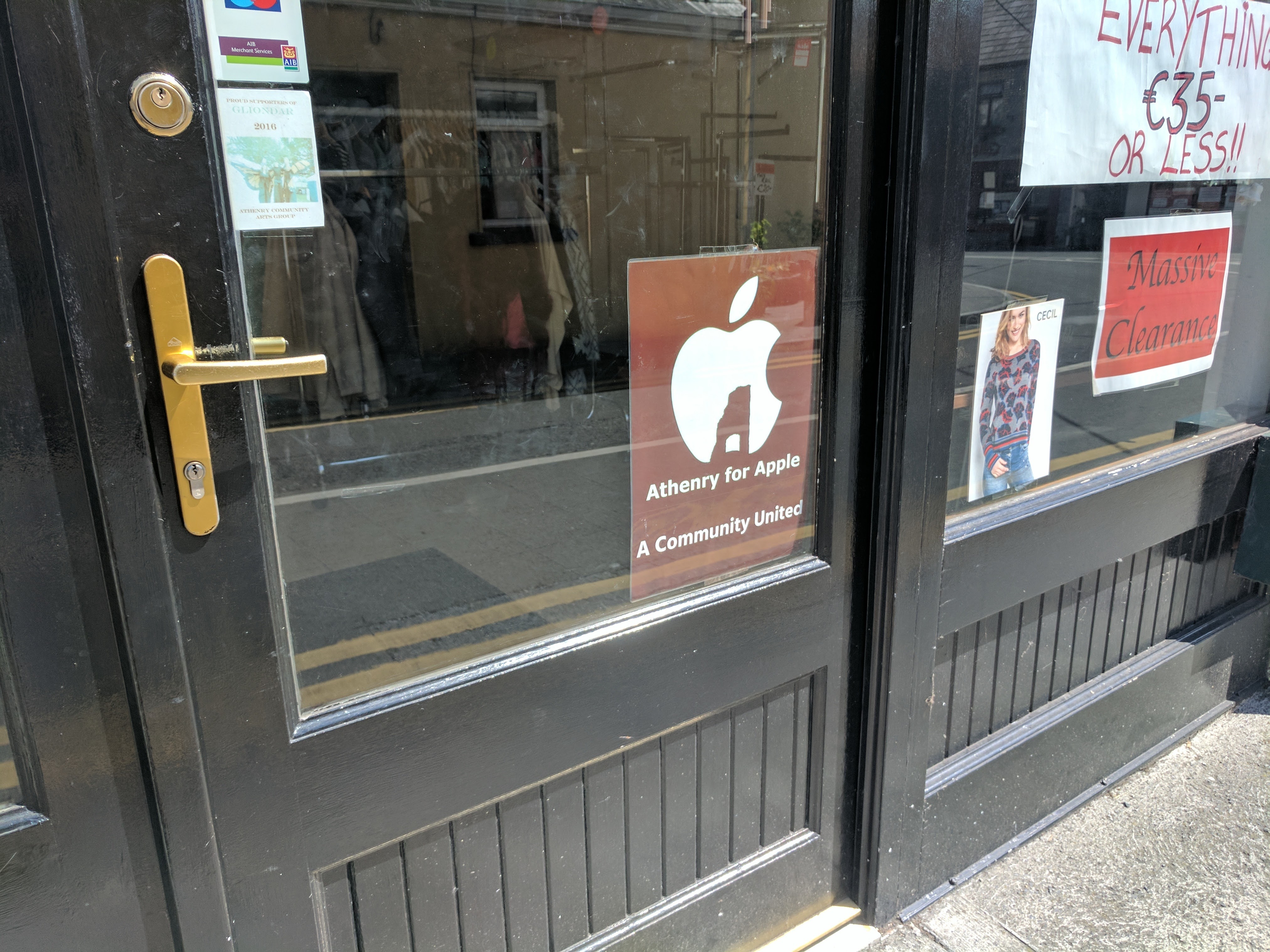
Daly and some neighbors appealed the local authority’s decision to Ireland’s quasi-independent planning body, An Bord Pleanala, in September 2015. Once again, Daly laid out his objections: Apple’s environmental impact statement was insufficient and the company’s claims of using renewable energy were misleading. Again, the board rubber-stamped the permission.
Many of his neighbors gave up, but Daly wasn’t finished. He sees the Athenry fight as emblematic of the Ireland’s need for greater regulation and smarter planning on the part of politicians who, in his view, kowtow to major companies with little regard for how mega-developments will affect the environment and the national security grid. (He is also opposing a $1 billion Amazon data center campus in Dublin.)
“It was a dreadful planning decision.”
“It was a dreadful planning decision,” he said. “We should have never offered this as a site to a single foreign national.”
Daly’s chief target is the IDA, Ireland’s investment promotion agency. He believes the public has been “misled” and the agency’s unrestrained attempts to get huge data centers located in Ireland are dangerous.
Late last year, he was granted permission for a judicial review of the Apple plan, and in March the High Court heard his appeal. Daly, Apple, and the people of Athenry are still awaiting a decision, which could come as soon as this Friday. Apple has officially said it’s still committed to the Athenry site, but the company wouldn’t comment on Daly or the current legal battle.
The delay is more than a headache for Apple; it’s causing Daly’s neighbors to turn against him. Many Athenry residents see Daly as a crank, or the paid puppet of some shadowy organization out to destroy the town. For virtually everyone else in Athenry, the presumed arrival of Apple signals the beginning of a resurgence in the fortunes of a region that simply has not benefitted from the fastest-growing economy in Europe.
“People are very annoyed over it,” said Kevin Higgins, a co-founder of “Athenry for Apple,” an active Facebook page where supporters of the data center project discuss recent developments. “It is the only hope Athenry has of ever coming back, because Athenry is in an awful state.”
Things took a rather worrying turn recently when a group member suggested they send Daly a horse’s head — a reference to the classic intimidation scene from “The Godfather.”
One member of the group told me during my visit that if Daly didn’t stop objecting to major projects, he’d end up like Michael McCoy, a serial objector to building projects in Dublin who late last year was found beaten to death. “People are openly saying he better leave town if Apple doesn’t come to Athenry,” the man said. (He didn’t want to be named out of fear of recrimination.)

Daly is of average height and build, and keeps his black hair short. He grew up in Pennsylvania and graduated from Penn State in 1996 with a degree in environmental resources management. He worked in New Jersey and California, first in the private sector and then for an enforcement agency issuing licences monitoring air quality regulations, before love brought him to Ireland in 2009.
He met his wife, who is Irish, online — an encounter he deems ironic given that her profile photo was likely stored in the kind of data center he is now fighting tooth-and-nail to block. After a stint in Galway, they moved 25 kilometers east to Athenry in 2011 in order to buy a house, and they have lived there since.
Athenry, population 4,000, is the very epitome of a small Irish town, dominated by a historic 13th century castle overlooking narrow streets and the gentle meandering of the Clarinbridge River. But those streets are quiet, and there are numerous “To Let” signs hanging outside commercial units.
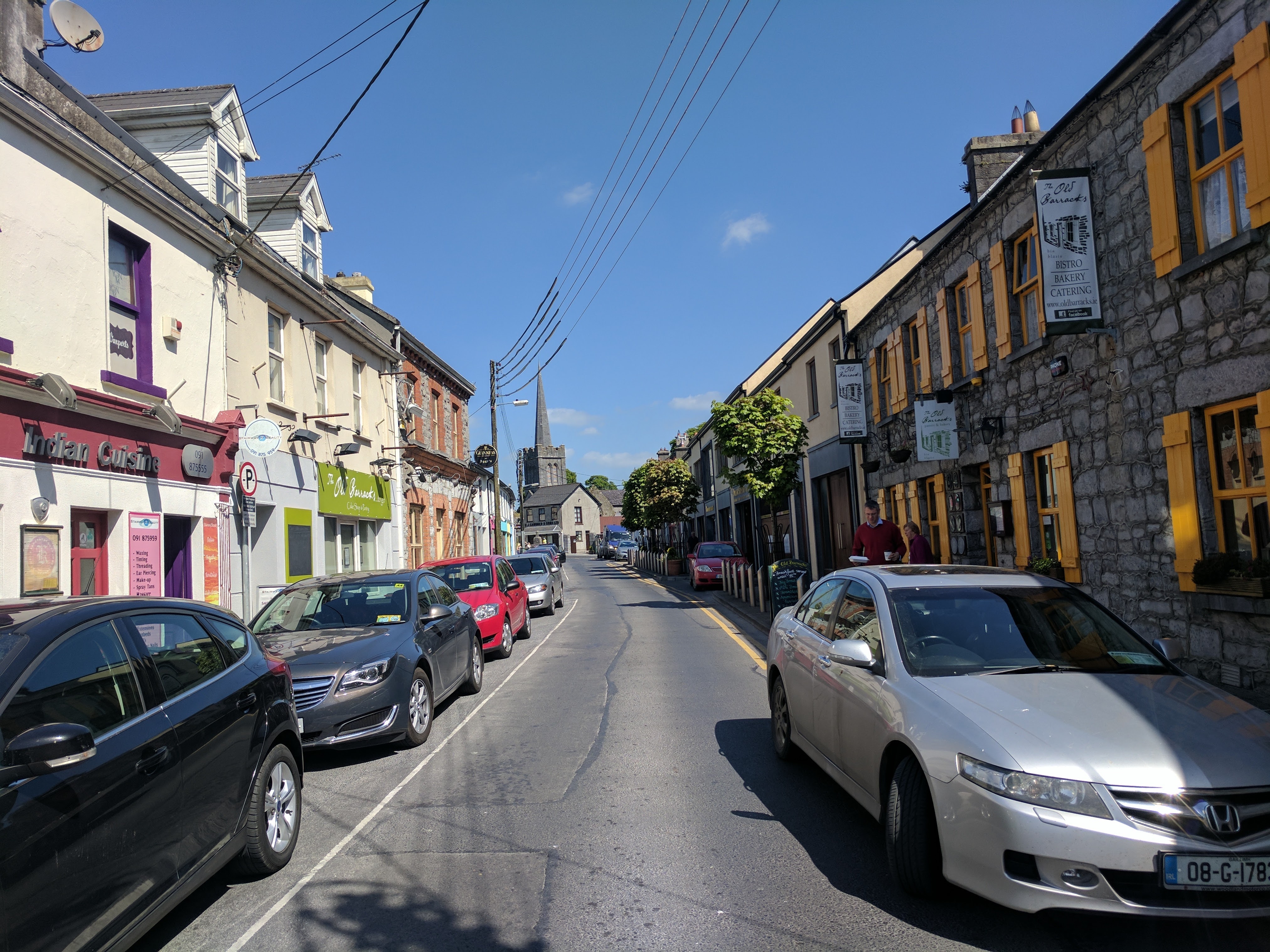
Athenry doesn’t have a major single employer. (Two of the biggest are local firms that employ about 100 people each.) Even though its name is sung by tens of thousands of sport fans around the world on a weekly basis, tourism is not a thriving industry here. It’s easy to see why residents would seize on the idea of Apple coming to town.
When Athenry was chosen over 25 competing sites for Apple’s Ireland data center, the news was widely hailed by most residents and local politicians as a huge boon for the area. Apple said it would build eight halls in 15 years, promising an investment of 850 million euros ($950 million). Last November, 2,000 people packed the streets of the town in a demonstration designed to show Apple that despite Daly’s legal challenge, the vast majority of locals were in favor of the planned data center.
“It cannot be overestimated the effect of the biggest company in the world coming to set up a base in a rural area in the west of Ireland — it cannot be overestimated,” Martin Morrissey, the proprietor of the Square Inn bar, which occupies the center of town, told me when I visited last month.
The site in question is a 500-acre forest in Derrydonnell, about 3 miles west of Athenry, with an entrance on a narrow and windy country road. It’s still a beautiful woodland — the only indication of Apple’s proposed project is a couple of planning notices hidden in the bushes. The site belonged to the state-owned forestry company Coillte, which operated it as a commercial forest until Apple came along in 2015.
Apple said it looked at 25 sites across Galway that the IDA presented as possible locations for a data center. Apple dismissed the rest of the choices as too small or lacking the necessary transport, power, or broadband infrastructure. It said the Derrydonnell site was “uniquely attractive.”
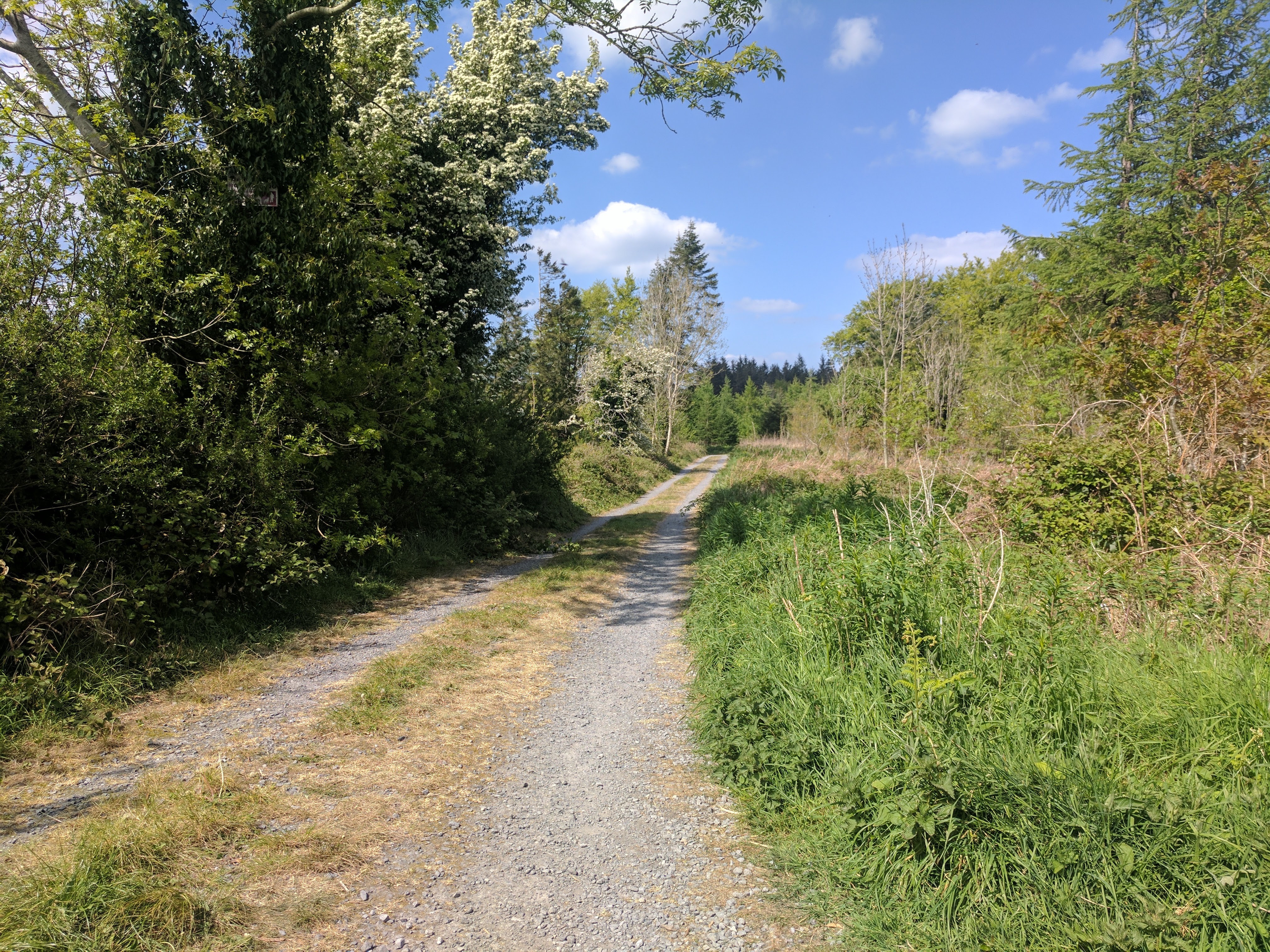
From Apple’s point of view, the site is indeed ideal. It is isolated and large enough for the data centers to be hidden behind a bank of trees, providing a layer of physical security that is perfect for such facilities. Once the project is complete, no one will even be able to tell that the data centers are there.
Daly says his reasons for opposing the data center development have nothing to do with Athenry. He believes that the planning authorities haven’t considered the impact of the entire development, claiming they’ve only looked at the first phase.
He now works remotely for the Sacramento-based environmental and engineering consultancy Sierra Research, which specializes in air-quality and climate change regulatory compliance. He writes the type of environmental impact statements he says are lacking in Ireland’s planning process.
“No one had the guts to tell Apple they had to do anything other than what they had put in their plan.”
“The planning process has been so sloppy and corners have been cut and requirements have been skirted in so many ways, because it was Apple, that I felt this type of process should be reviewed judicially,” he said. “No one had the guts to tell Apple they had to do anything other than what they had put in their plan.”
Daly grabbed headlines by saying that if Apple completed all of its eight planned data halls in Athenry, they would account for 240 megawatts, or 6.75 percent of Ireland’s total electricity usage. That’s the same amount of energy used by about a quarter of all Irish homes, or around 1 million people.
Apple says the 240 megawatts figure is somewhat misleading; initially, at least, the load of the first data hall will be just 6 megawatts, taking up to five years to reach a full capacity of 30 megawatts. But that’s just one hall. Daly insists the impact of the entire project should be examined — not only for Athenry but also for all of Ireland.

Ireland is an ideal location for data centers thanks to the temperate climate, which naturally cools the huge amount of heat generated by the servers housed in data centers. It will soon be the only English-speaking member of the EU. And, of course, its low corporate tax rate doesn’t hurt in attracting tech investment.
These factors have caused a huge number of companies to establish data centers in Ireland, including high-profile names like Google, Amazon, and Facebook. Dozens of private operators offer cloud computing services to businesses and individuals. Microsoft kickstarted the boom in 2009 with a facility in Dublin that has expanded to more than 500,000 square feet. Chinese e-commerce giant Alibaba is said to be investigating the possibility of locating its first European data center here.
In 2016, Ireland’s data centers were drawing around 300 megawatts from the Irish power grid, representing about 2 percent of overall demand. EirGrid, the national power company, estimates that by 2030 that figure will have increased to 30 percent.
Fintan Slye, the CEO of EirGrid, said the company has factored this growth into its plans and that it trusts the market and regulators to help keep up with electricity demand. “We are responsible for ensuring the system is secure and stable, and we wouldn’t do anything or allow anything to happen that would compromise that,” he said in an interview.
David McAuley, the founder of Bitpower, a specialist power consultancy, said he believes EirGrid is in control of the network’s development. All the same, he’s been “taken aback by the speed of the development” of data centers in Ireland in recent years, and he said longer wait times for operators to get a connection may result.
The Commission for Energy Regulation says the rapid expansion of data center developments in Dublin will put some pressure on the grid there, and more capacity may need to be added “in the short term.” The commission is looking to offer incentives to companies to build data center projects in areas with more grid capacity — such as the west of Ireland.
But no matter where the new data centers are built, the basic transmission infrastructure will need significant upgrades to cope with the expected growth — and the cost of this won’t be borne by Apple or Amazon but by Irish taxpayers. These upgrades will likely cost billions of euro over the next decade.
Upgrades will likely cost billions of euro over the next decade.
Daly argues that burdening consumers with these costs is unfair, especially when you consider the relatively minor number of jobs data centers create — Apple’s will bring 150, and Amazon’s in Dublin could employ as few as 15 people.
Ciaran Cannon, a Fine Gael member of Parliament who represents Athenry, dismisses Daly’s suggestion that politicians simply laid down and let Apple roll over them. “It is not true to say we are kowtowing or bowing to Apple,” he said. Instead, he sees the project as the beginning of a golden age of investment in a rural part of Ireland that’s been ignored by big multinational corporations.
“The fact a global giant like Apple deems it economically acceptable and viable from their point of view to put that amount of money in the periphery of a small west of Ireland town, sends out an incredibly positive signal about that town and the region and its capacity to accommodate an investment of this size,” Cannon said.
Cannon wasn’t sure why a data center in Athenry would draw any other investment to the town, given that data centers need limited maintenance and don’t create much in the way of secondary jobs. His total belief in the power of Apple to transform Athenry was shared by many of the people I spoke to here, but no one could tell me just how the data center project would change anything.
“A handful of people unfortunately have banked the entire future of their town, the entire future of their families, and their children’s employment on this data center,” Daly said. “And that’s unfortunate.”

Since 2013, Apple has claimed its data centers globally have been run entirely on renewable energy. Greenpeace’s latest Clicking Green report praised the company for its continuing leadership in developing data centers powered by 100 percent renewable energy.
Apple can claim it will use 100 percent renewables in Ireland thanks to a deal with Vayu, a licensed supplier of green electricity. Vayu itself doesn’t generate any renewable electricity, but it contracts with companies that do, thereby allowing customers like Apple to make renewables claims.
The problem with this arrangement, as Daly sees it, is that the contracts will allow Apple to simply deplete Ireland’s existing supply of renewable energy instead of providing any additional power to the grid. Ireland is already set to miss its 2020 renewable targets. “The fact is, there is no new renewables whatsoever, there is no new energy whatsoever,” Daly said. “They are just taking from the grid; they are not adding.”
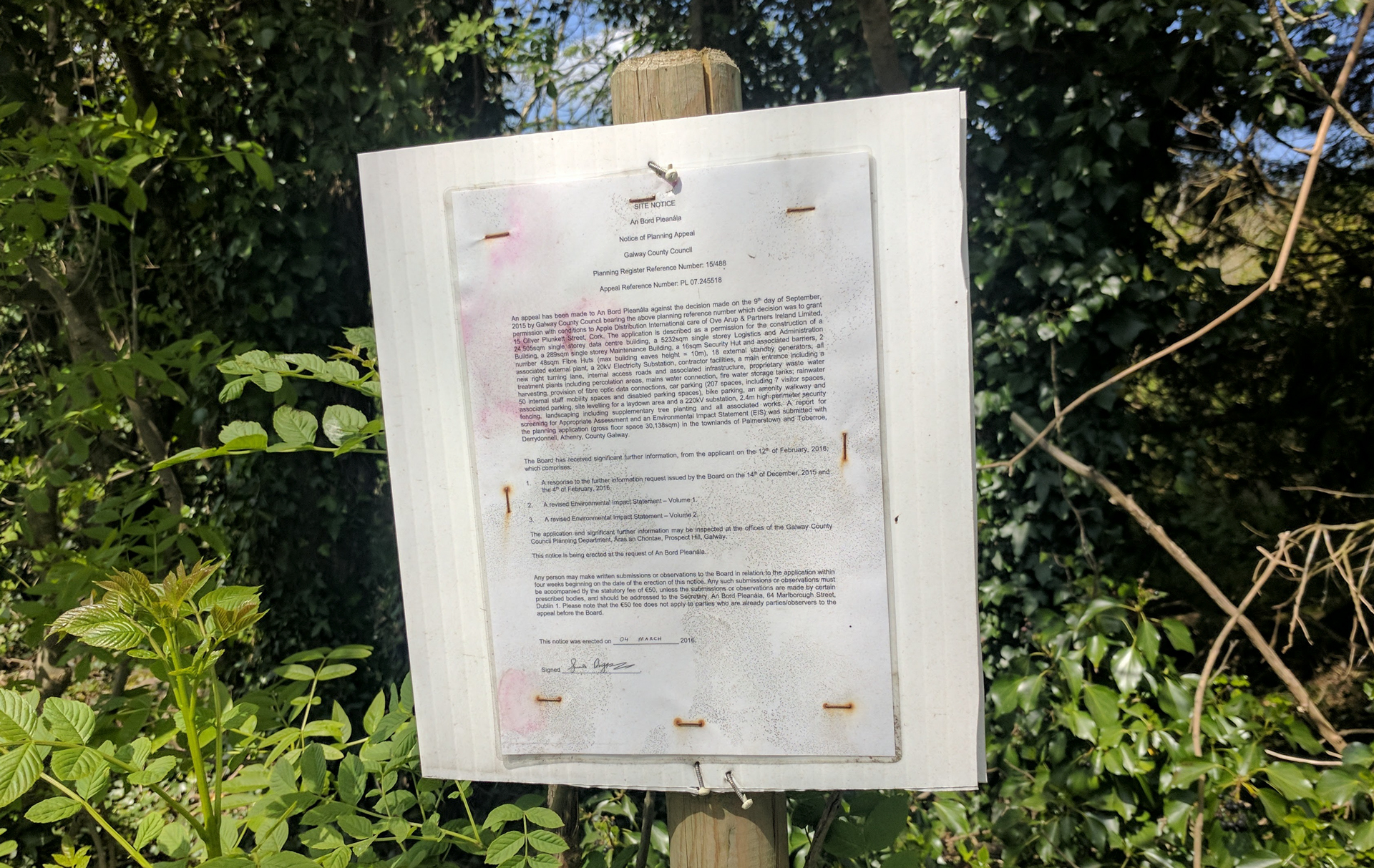
An Bord Pleanála’s inspector agreed with Daly’s argument about Apple’s renewables claim, saying, “I do not see how it can clearly be shown that power to the Apple data center would be from 100 percent renewable sources.” Yet the board approved the data center project, and it did not require Apple to show how it would mitigate other environmental impacts, despite rules requiring such an assessment.
Daly feels the planning board should have held Apple to a higher standard and required the company to offset the project — by building a wind farm, for example, or creating a waste-heat recovery system. He says it’s incumbent on companies like Apple, which make big claims about their environmental credentials, to insist on state-of-the-art energy practices.
In Denmark, for example, where Apple’s other European data center is almost ready to come online, the company was required to install a waste-heat recovery system that will use the huge amount of heat generated by the servers to heat homes in the community. The data center will also be partly powered by recycling waste products from nearby farms. In Seattle, Amazon has already demonstrated the feasibility of a waste-heat recovery system to power its own offices. In California, Google collects rainwater to cool its servers.
The Irish government says it does not have specific regulations or plans in place for the sustainable development of data centers, though operators must try to reduce or eliminate environmental impacts.

It’s clear in talking to Daly that the environmental impact of data centers — niche as it may be — is his passion. But the question of why he’s taking things so far and at such a cost to himself — both personally and financially — remains unanswered for the people of Athenry.
Seamus Mulherns, another founder of the Athenry for Apple group, said, “Everyone is entitled to their opinion and entitled to object,” but he didn’t really understand why Daly was objecting.
Daly’s wife, who actively promotes the arts, heritage, and cultural events in the town, helps with his cause. He said she backs him “110 percent” and that she “bears the brunt” of the views of the rest of the residents, though he says she converts at least one person to their viewpoint every day. She declined to speak with me herself.
Daly has nothing to gain financially from his actions; indeed, he says he will bear the full cost of paying a barrister for four days in the High Court to argue the case. He wouldn’t say how much, but legal experts said that given that his barrister is the former deputy prime minister of Ireland Michael McDowell, the bill could easily run to 40,000 euro.
Daly said he won’t reveal his legal fees because whatever they are, the figure could give detractors ammunition to use against him. “If it’s a very high number, then people will think it’s a conspiracy and I’m being paid to object,” he said. “If the cost is perceived to be low, then the feedback I get is that this is awful, that someone virtually for free can block this amazing project.”
Daly isn’t totally alone in his fight against Apple. Joining his objection to the Athenry data center are Sinead Fitzpatrick, a solicitor who happens to live next to the proposed development site, and Brian McDonagh, a Wicklow landowner who, a decade ago, paid 22 million euro for a parcel of land where he wanted to develop the “world’s biggest data center.”
Athenry residents are annoyed at Fitzpatrick, but they see her grievance as more reasonable, and understandable, since she lives next to the site. McDonagh also draws their anger because his objection is so clearly based on financial gain, but he’s a stranger to the town. Daly moved to the area in just the last few years — he’s the one they really don’t understand. Why is this newcomer standing in the way of their prosperity?
Daly told me comments like those in the Facebook group didn’t bother him, but he admitted he’s “concerned for myself and my family, especially if I win.” He hopes he can get his neighbors to understand that his arguments hold water.
In early June, Daly finally met face to face with some members of the group, a meeting he called “positive,” since he was better able to articulate his concerns.
That response suggests Daly might have done well to explain his position more clearly at an earlier juncture. Perhaps with more conversation, there would be less animosity toward him today.
I pointed this out, and he sighed. “I can’t have individual debates with 2,000 people.”

David Gilbert is a reporter for VICE News. Illustration by Joel Plosz.




